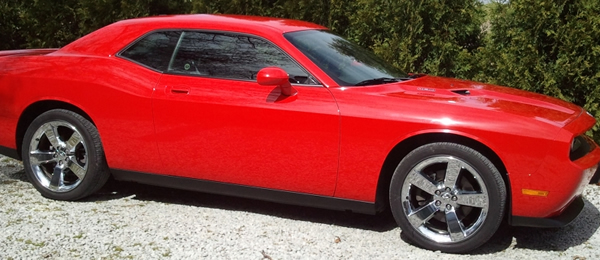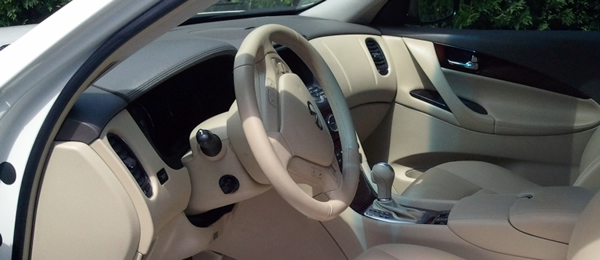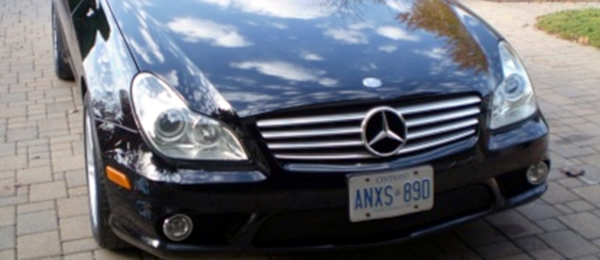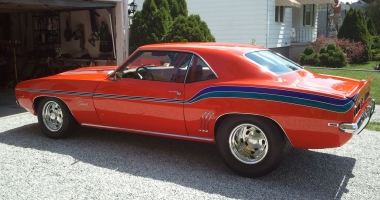Paint Facts

Questions & Answers
Q: What is clear coat paint?
A: Automotive paints are a mixture of ingredients including resins, binders, fillers, additives, and carrying agents (typically solvents, sometimes water). Clear coat paint is simply paint, or resin without pigment. Non-clear coat paints (also called single-stage paint) is paint (or resin) with pigment added to give the paint color.
Additives are specialized chemicals that are often used to provide a
specific characteristic to the paint, depending on the application. An
example would be a Flex Agent. Flex Agents are used in paints that are
applied to flexible components, such as flexible urethane bumpers, to help
the paint resist cracking when the urethane bumper flexes. UV inhibitors are
another clear coat additive that helps prevent the sun's ultra violet rays
from fading the color coat under the clear coat
Today, approximately 95% of all cars, trucks, and S.U.V.'s coming out of
the factory have a clear coat finish.
Clear coat finishes (also referred to as two-stage paint systems) are simply a layer of clear resin applied over the top of colored resin. Although a clear coat does protect the base coat, just like a single-stage finish, the clear coat needs to be regularly maintained to keep it in top shape.
Contrary to what you may have heard clear coat finishes do need to be waxed periodically to maintain their appearance value. Don't buy into the false information that clear coat paints are paints that require no maintenance, this is simply not true. Simply look at any car with a clear coat finish that has been neglected and compare it to a car with a clear coat finish that has been recently detailed and your eyes, as well as your common sense, will tell you that clear coats look better when maintained, and accordingly will last longer when maintained.
Q: Why are clear coat finishes "Scratch Sensitive"?
A: Clear coat finishes are incredibly sensitive to scratches and swirl marks. Because the top layer is clear, light reflects through it and bounces back highlighting these scratches from behind. This tends to magnify defects making them easier for your eyes to see.
Although most clear coat finishes are much harder and more resistant to
oxidation than traditional lacquers and enamels finishes, they still scratch
very easily. For this reason clear coat paints should never be worked on
with old-fashioned, harsh abrasive products like rubbing or polishing
compounds.
Even professionals in the refinishing and detailing industry can make
mistakes if they don't keep up on evolving technologies in surface coatings
and car care products.
Q: How can I tell if I have a clear coat finish?
A: To determine whether you have a clear coat or a single-stage finish perform this simple test.
Find an inconspicuous area to test, such as the lower rear quarter panel
of your car's fender or inside the door jamb.
Clean this area first with car wash and water. You don't want any dirt or
grime to interfere with your test.
Using a small piece of white cotton, such as a piece of terry cloth
towel, rub a little paint cleaner or Cleaner/Wax into the paint of this
inconspicuous area.
After rubbing for a few moments, turn your cloth toward you and look to
see if there is any color from your paint on the cloth. If you have a red
car and you now have red paint residue on your cloth, this is a pretty good
indicator that you have a single stage finish. If you have a red car and you
don't see any red paint residue on your cloth, this is a pretty good
indicator that you have a clear coat.
To be 100% sure, you should test in a couple of different areas.
Note: If you have a white, or very light colored car you should use a
dark piece of cotton cloth and look for the color of your car's finish on it
after rubbing some paint cleaner or Cleaner/Wax into the finish for a few
moments.
Q: Can a clear coat paint oxidize?
A: Yes, however the problem is not as common as it is with traditional paints like lacquers and enamels. The reason for this is because of the molecular structure of modern paints is much tighter, more dense than traditional paints like lacquers and enamels. This in-turn makes the pore structure tighter and denser. A dense molecule structure makes it difficult for water and other detrimental substances to get into the paint through pores and other microscopic surface imperfections where they cause oxidation and corrosion.
Most oxidation problems can be avoided with even minimal attention (i.e. regular washing and periodic waxing with a premium wax or paint protectant).
Q: Can clear coat fade?
A: Yes and No
The word fade means to:
"Lose color or brightness gradually."
Technically speaking, since the clear coat has no color, it cannot fade or
lose it's brightness (at least if we use the above definition).
It can however become dull, but that's not the same as fading and is more
typically a sign of oxidation and the build up of above surface
contaminants.
Now lets ask the above question in just a little different way.
Can the color coat below the clear coat fade?
In short, the answer is yes, however, it depends upon the environment in
which the car is exposed.
A car parked inside most of its life, far away from the equator will not
show much sign of fading.
A car continually parked outside in a desert region close to the equator
will fade more quickly and the results will be more apparent over time
because of the increased exposure to UV rays.
While these answers are technically correct, the non-technical answer to the
question, "Can a clear coat fade?", is yes, but very slowly. So slowly that
most people cannot perceive any visual change over the course of normal
day-to-day living or during the length of the ownership of their car.
Q: Can clear coat fade?
A: Yes.
Even more than yesterday's paints, today's clear coat finishes look faded
whenever the surface becomes contaminated by above surface contaminants,
things like:
Airborne pollution
Acid rain
Industrial fallout
Rail Dust
Airborne overspray
Bug splatter
Bird droppings
As contaminants build-up on the surface they reduce the reflective
quality of the finish by creating a surface with somewhat of a textured-feel
to it. This in turn acts to diminish gloss (which is a direct result of how
smooth your surface is), thus causing the paint to look dull.
The best way to prevent a clear coat finish from becoming dull is to
remove fresh contaminants as quickly as possible.
Washing your car weekly or is especially important if your car is a daily
driver and parked outdoors for any length of time.
When contaminants build up (you can tell if you have bonded contaminants by drawing the clean face of your palm across the finish after washing and drying the car and feel little bumps that are stuck to the finish)
Car Care And Car Washing Tips
Recommended Car Care Maintenance
Schedule

























